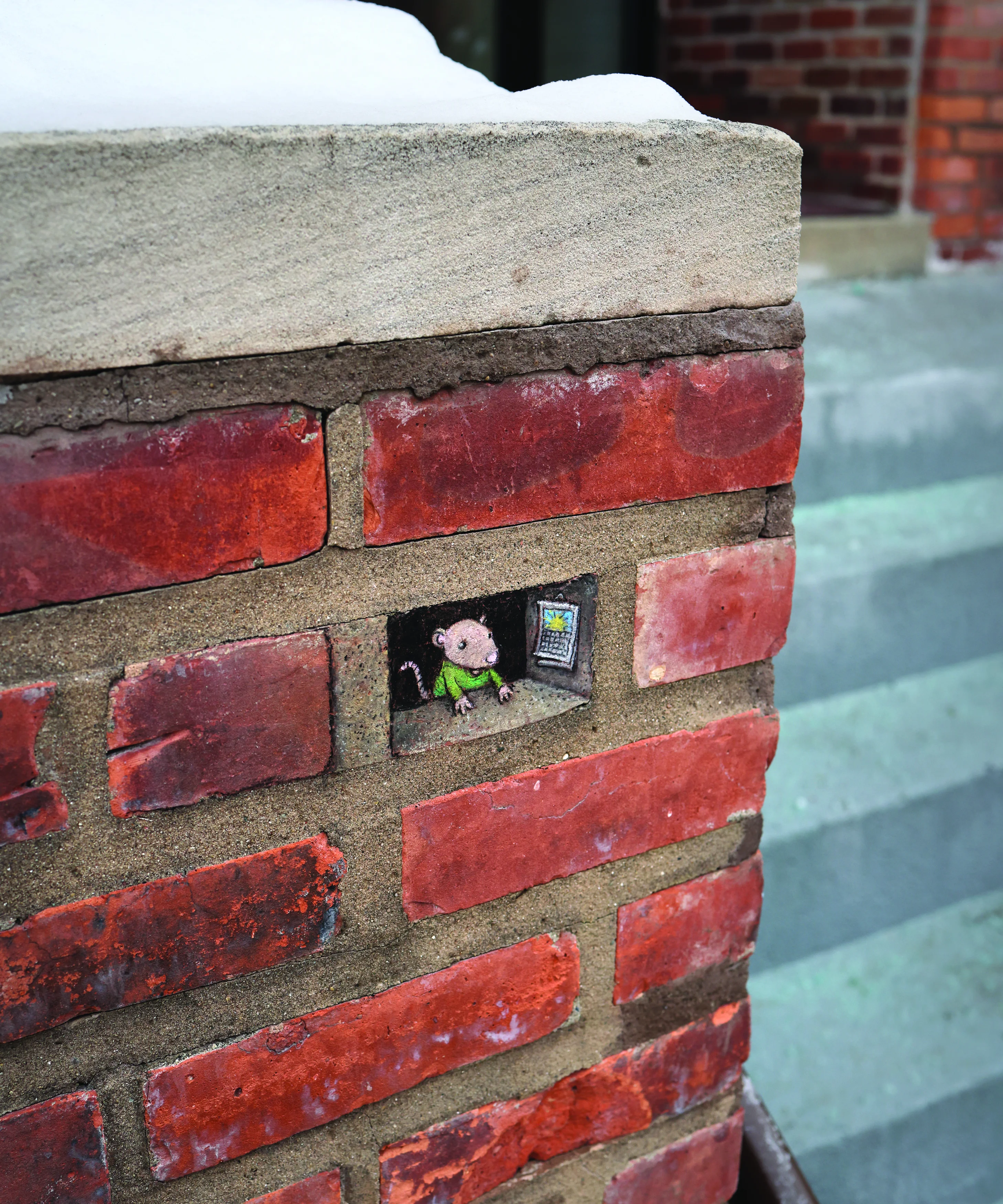Interview David Zinn - world famous street art
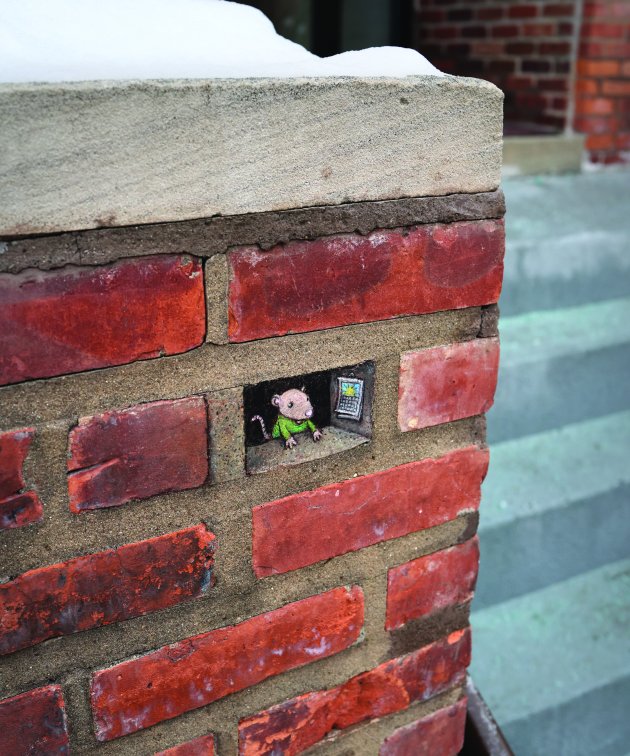
‘Altering expectations where art can be found’
The American artist David Zinn is famous for his heart-warming street drawings, composed of chalk, charcoal and found objects. Most of his creations appear on pavements in his native Michigan where he has lived his entire life, in Ann Arbor, but through sharing on social media they are seen the world over. Before the international breakthrough his professional commissions included, David Zinn says, “theatrical posters, business logos, educational cartoons, landfill murals, environmental superheroes, corporate allegories and hand-painted dump trucks”. An interview about his technique and ideas.
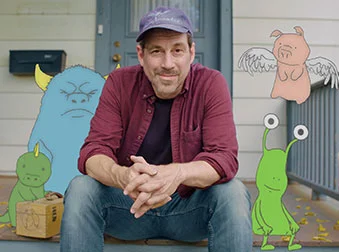
You have said in a TED talk art started at home ‘with doodling, because it kept you quiet’. Was art normal at home?
I think my parents would have encouraged anything that brought me joy. My mother is an amateur watercolourist and my father is a research scientist, and art was encouraged both as a creative outlet and as a quiet entertainment that can be done anywhere with anything. Because drawing was such a casual daily pastime, I didn’t think to study it seriously in college; that would have felt like studying breathing, and similarly might have had the unintended effect of making it harder to do. I studied creative writing instead, which has been useful in writing the one-sentence stories that accompany my photographs.
How was it to give up the day job for your street art?
It is true that I spent twenty years trying to make my art useful to society in the form of educational illustrations and promotional materials before I discovered that people are more interested in the art I make solely to entertain myself. It was a wonderful development, but not without complications – it feels a little like singing in the shower and suddenly realizing that the whole neighborhood can hear you.
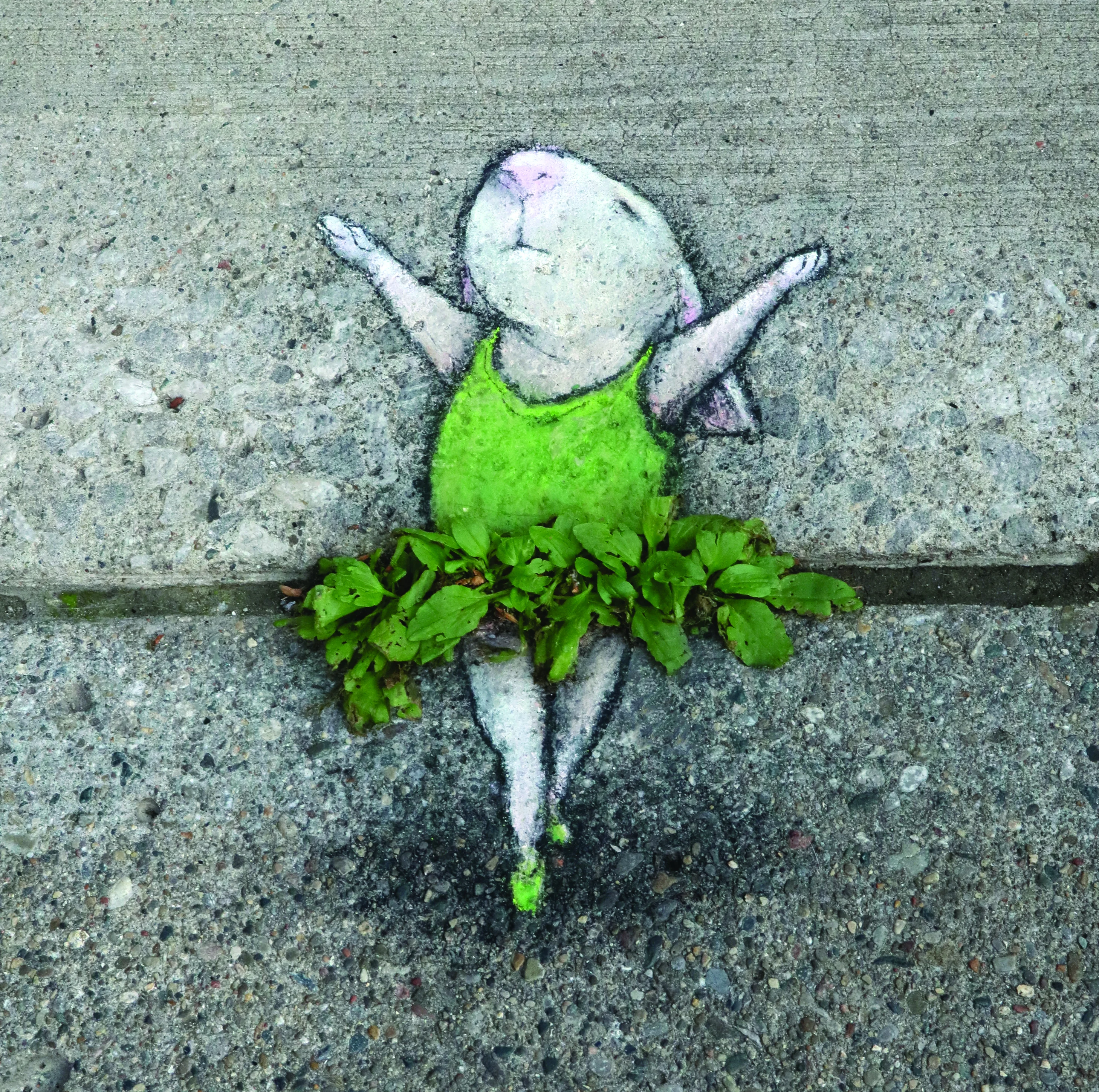
Although both have been usefully shaped by practical demands – clients and deadlines for my professional commissions, daylight and weather for street art – the design of my ephemeral chalk installations is much more improvisational. Freed of purpose and permanence, there is no need for me to understand what I am trying to do until I’m finished doing it, and sometimes not even then. It is a completely selfish therapeutic indulgence.
Your technique is applying ‘ephemeral pareidolic anamorphosis’. How does this work?
I also use the term ‘augmented pareidolia’ because the process begins with pareidolia, the psychological phenomenon that makes us see animal shapes in clouds and faces in trees, and augments that vision with additional lines and shapes until the imagined image is visible. It’s like playing connect-the-dots with the freedom to ignore some of the dots and add others.
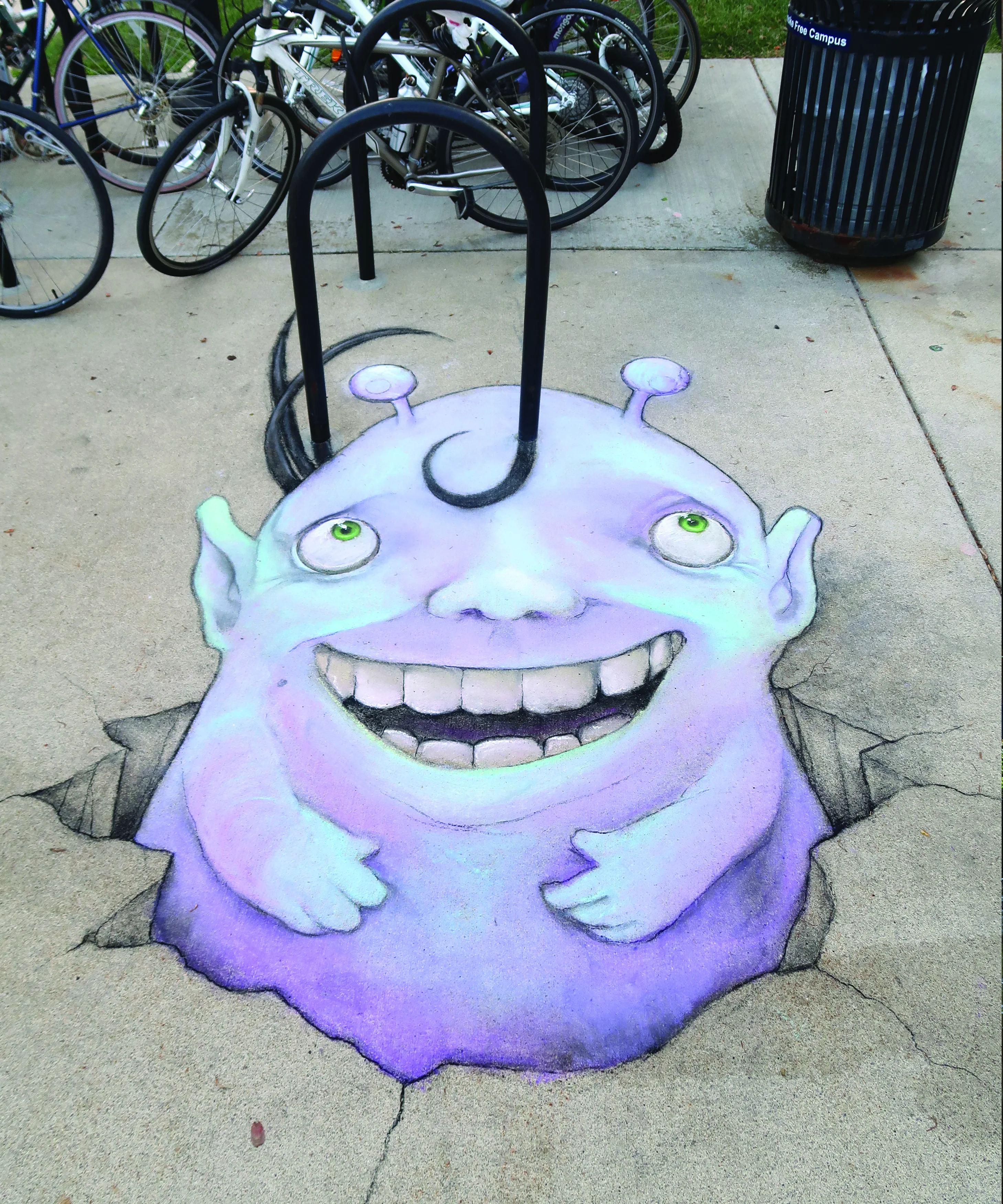
The role of anamorphosis in this process is the acknowledgement that those dots create different pictures depending on the angle they’re viewed from. This is particularly important when creating art on a horizontal street surface, because the top and bottom of an art installation drawn on the ground is an arbitrary choice.
What is your preferred size for your creations?
I prefer creatures that are around two or three feet at the largest because they can be drawn in one sitting without elaborate planning. These smaller creatures also require less distortion to look three-dimensional in photographs. The largest creature I can recall drawing was probably six or eight feet in length. He had to be that size because a bike rack had been incorporated into his hair. I had to put him in a hole to keep the situation from getting out of control.

Which other art movements or artists are an example?
Ann Arbor has been blessed with the mysterious phenomenon of the “fairy doors,” laboriously crafted miniature doors that have appeared without explanation next to (and often meticulously mimicking) the doors of businesses downtown. Some have windows through which one can see detailed miniature spaces inside, and others have emerged in utterly unexpected locations, such as inside a row of books at the public library. The fact that these were so lovingly crafted and then scattered anonymously throughout the community had a powerful influence on me; without that example, I might have believed that the only reason to create art was to have it reproduced or hung in a gallery accompanied by an explanation of who created it and why.
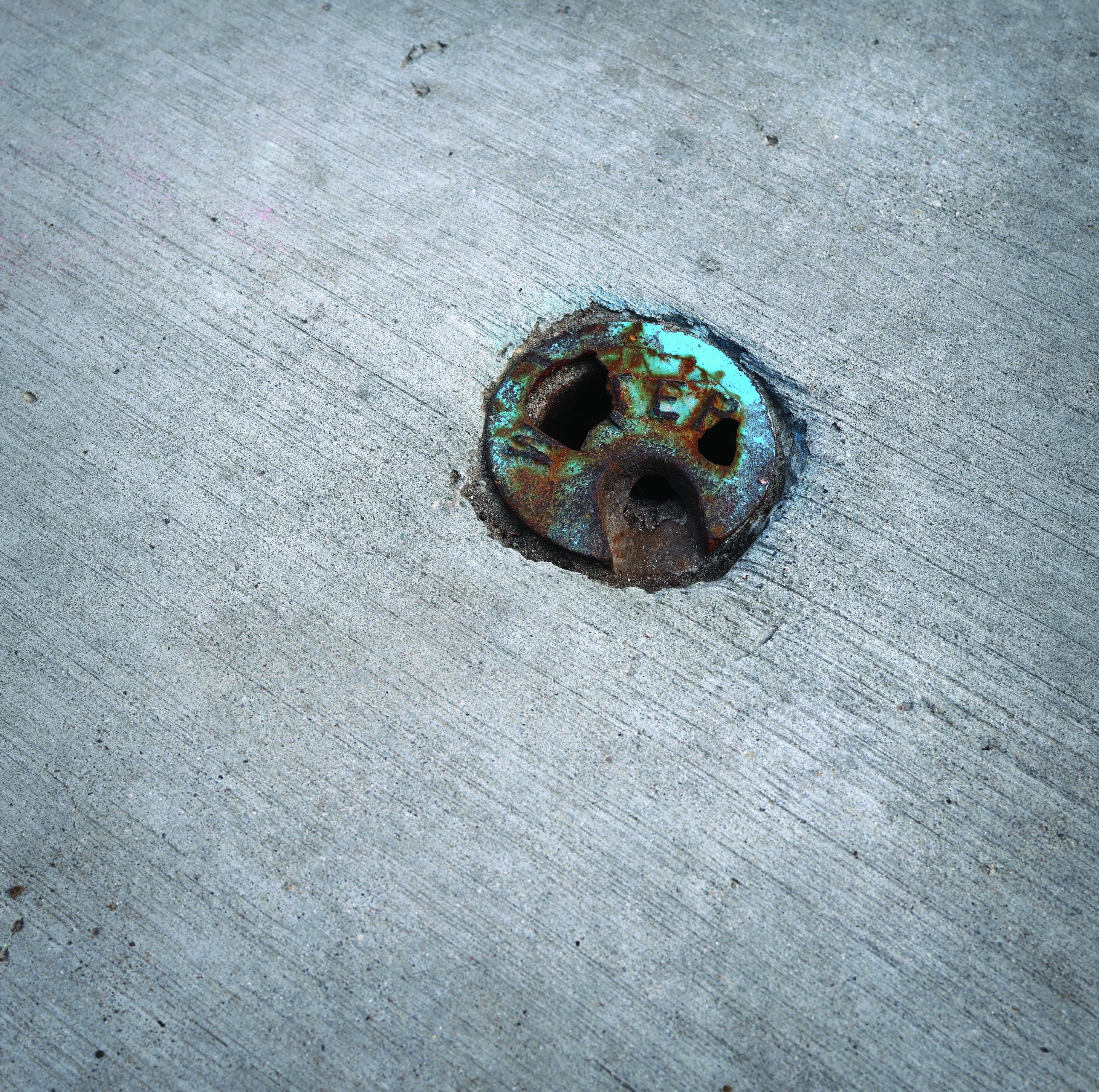
When I started drawing outdoors, I found kinship with many other artists who incorporate their work into natural surroundings such as Isaac Cordal, Joe Iurato, and the prime ephemeral example of Andy Goldsworthy. I’ve also run across a heartening number of artists who, like me, take light-hearted inspiration from tweaking the world around them: Hombre McSteez drawing on animation cels in Los Angeles, Sandrine Boulet adorning weedy curbs in France, Miguel Marquez placing absurd miniature signage in Australia, and Akie Nakata painting small found stones in Japan. Together, I hope we are altering expectations of where art can be found and how serious it needs to be.
How do you work?
I’m not proud to say this, but my best hope for creating art is to distract myself from the goal of making art. I carry chalk and charcoal almost everywhere I go so that I can draw on a whim – usually while I’m on my way to somewhere else. That incidental approach creates more opportunities for making art, which in turn puts less pressure on any one opportunity to turn out well. I do probably create art almost every day, but it’s under the conditions of casual indulgence rather than dedicated practice.
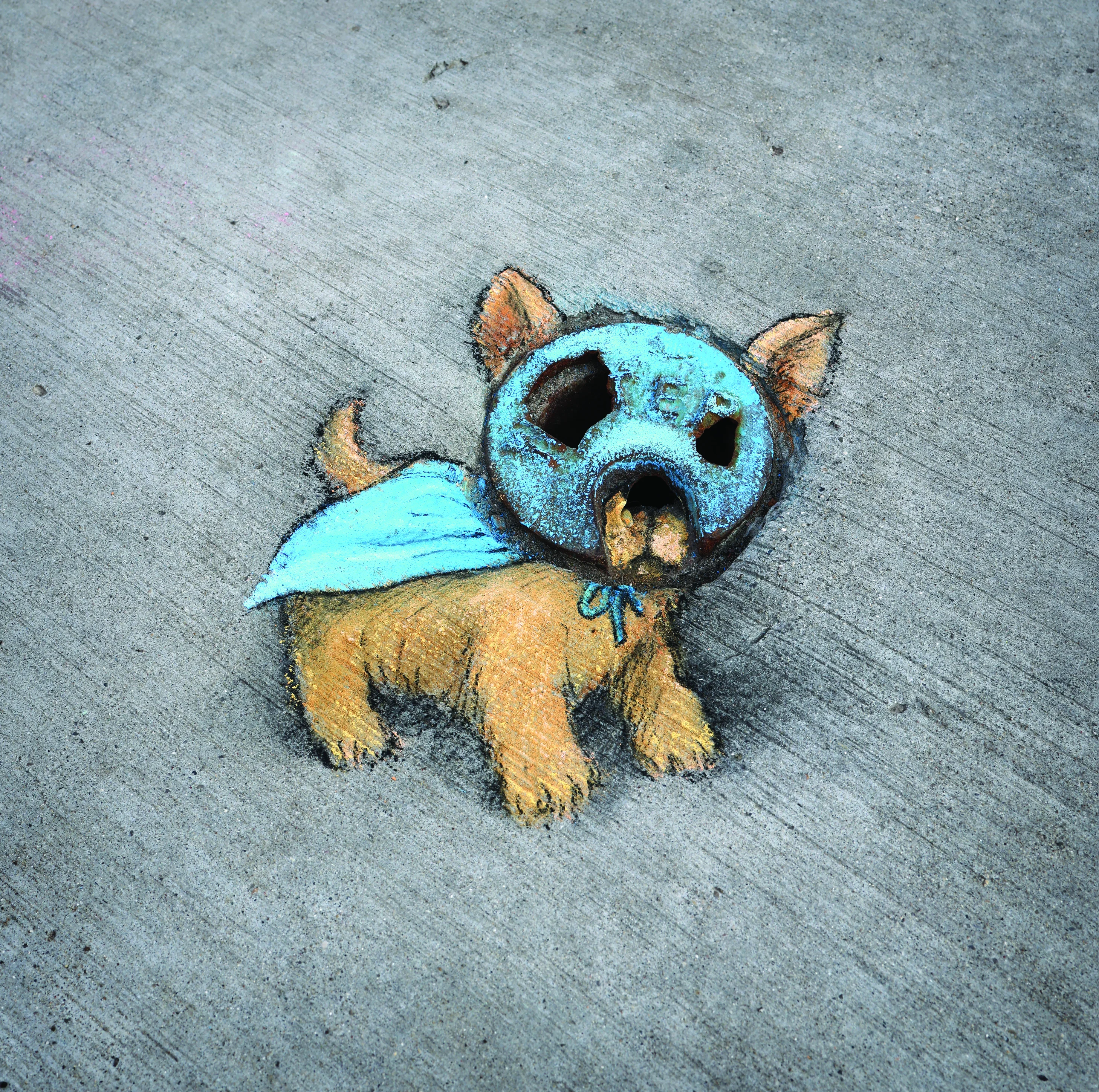
Do you create any other art, with other materials?
I have created a few permanent installations with acrylic paint in Taiwan, Sweden, and the midwestern United States. I’m glad to have created them, but working with paint generally reminds me that permanent materials are not significantly more enduring than temporary ones, and ephemeral art installations are both simpler to negotiate and more therapeutic to create.
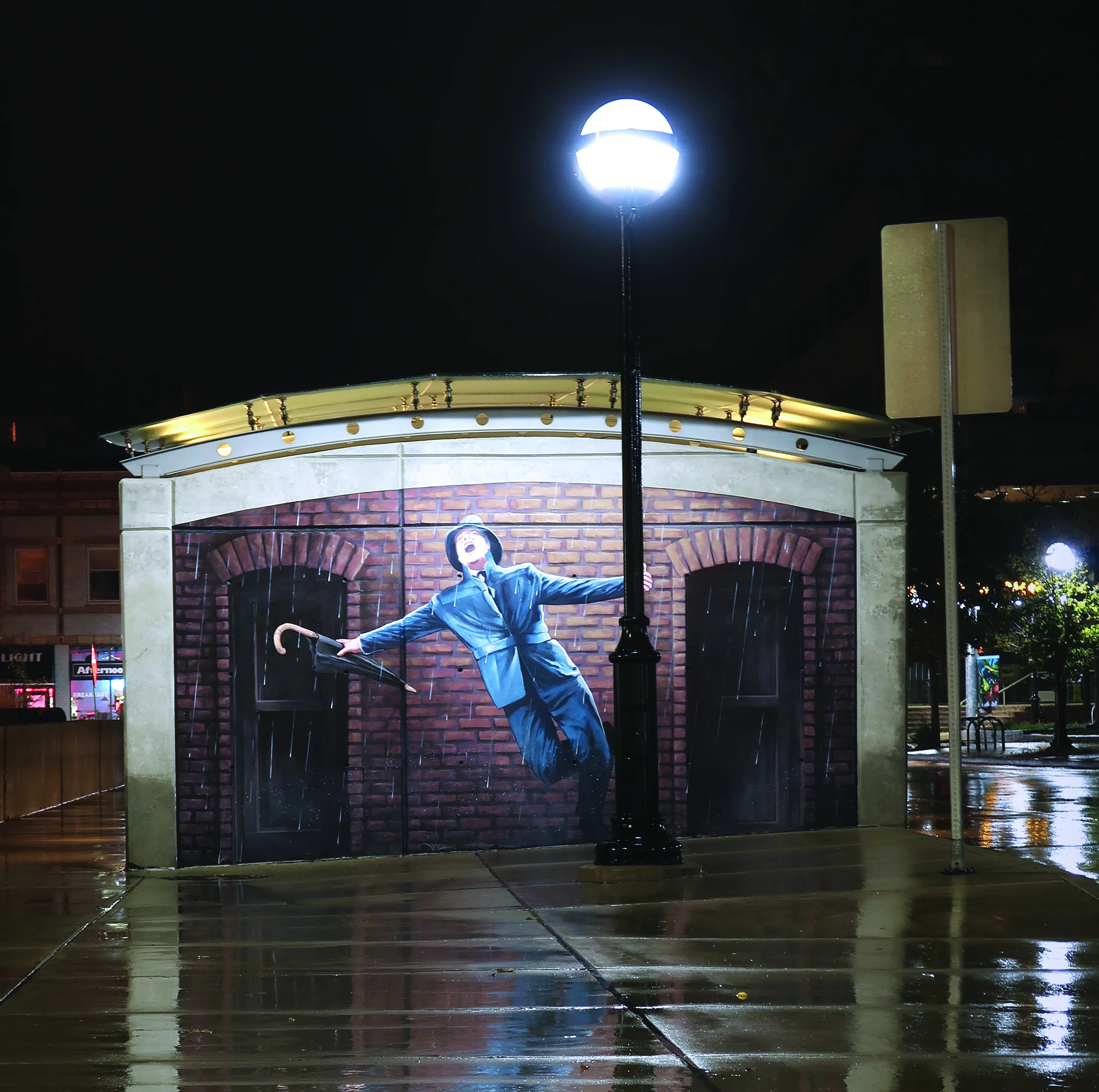
I have produced a large-scale permanent installation that covers the entire surface of a wall, ‘Laughing at Clouds’ (the official but little-used title of my Gene Kelly mural). This only happened because that specific wall inspired that specific image. Until I see another wall with a particular need, I’m happy to leave the large-scale murals to other artists and indulge my small ephemeral urges instead.
What is your main theme at this moment?
For better or for worse, documenting my process and results on social media has made me more determined to seek unexplored territory in my work. If I were still drawing on local sidewalks in obscurity, I would be perfectly happy to turn every pair of gum spots into eyes and every brick into a window, but now I’m caught up in wanting to show my audience a new trick every time. I’m hoping that this is a temporary concern, because the carefree childlike indulgence of chalk art is far more important to me than anything else.
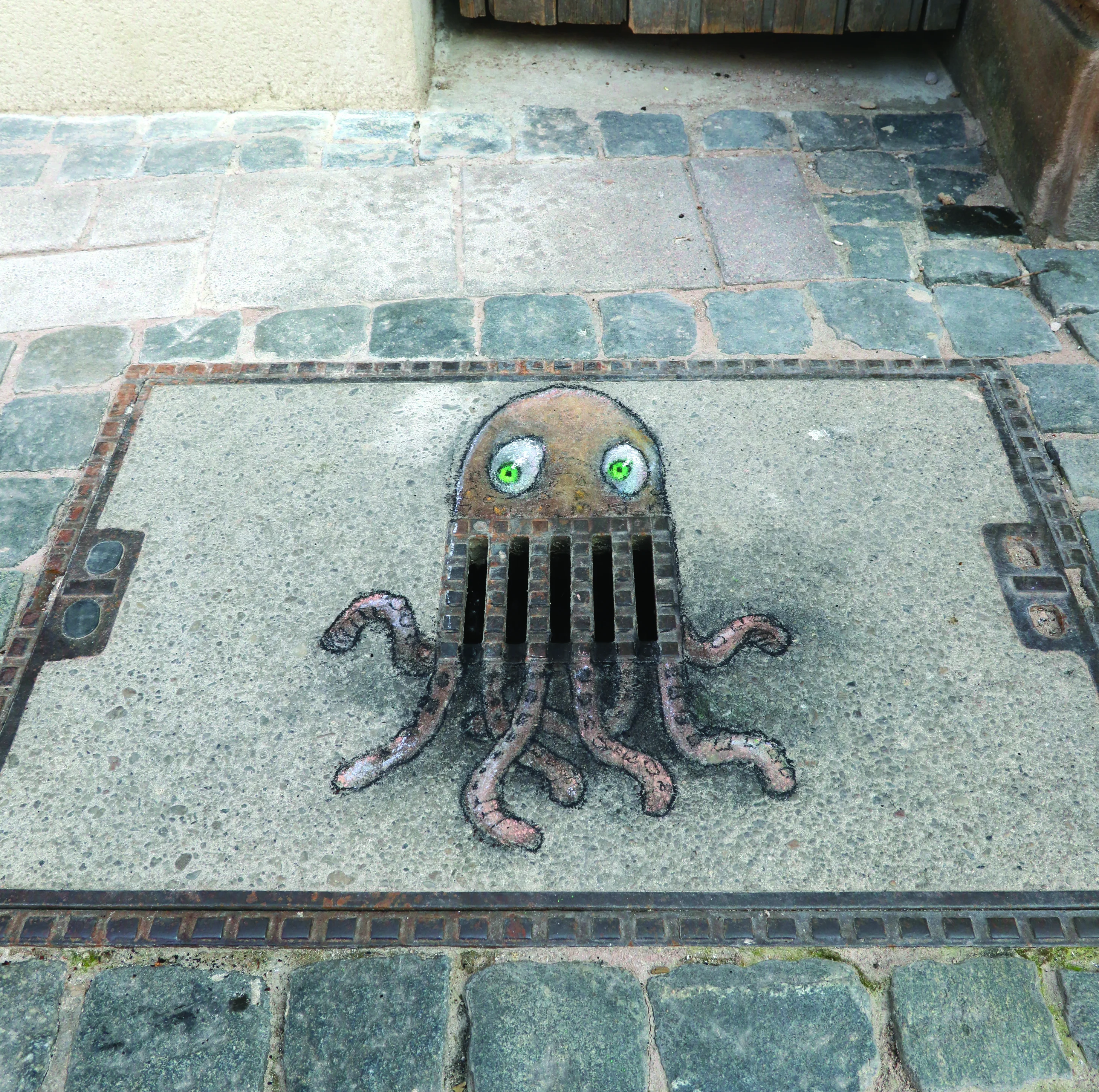
Have you got any new plans?
My fifth book of chalk art photographs is being published this spring by Prestel, which will likely lead to two conflicting goals. On the one hand, I might eventually be able to support myself well enough through the sale of books and prints that I can spend every day drawing on the streets of my own neighborhood with no other distractions. On the other hand, since Chance Encounters is being released in a German edition, under the title Street Art by David Zinn, I am also eager to resume drawing in other countries. There is a lot of satisfaction to be found in communicating through art with people with whom you don’t share a spoken language.

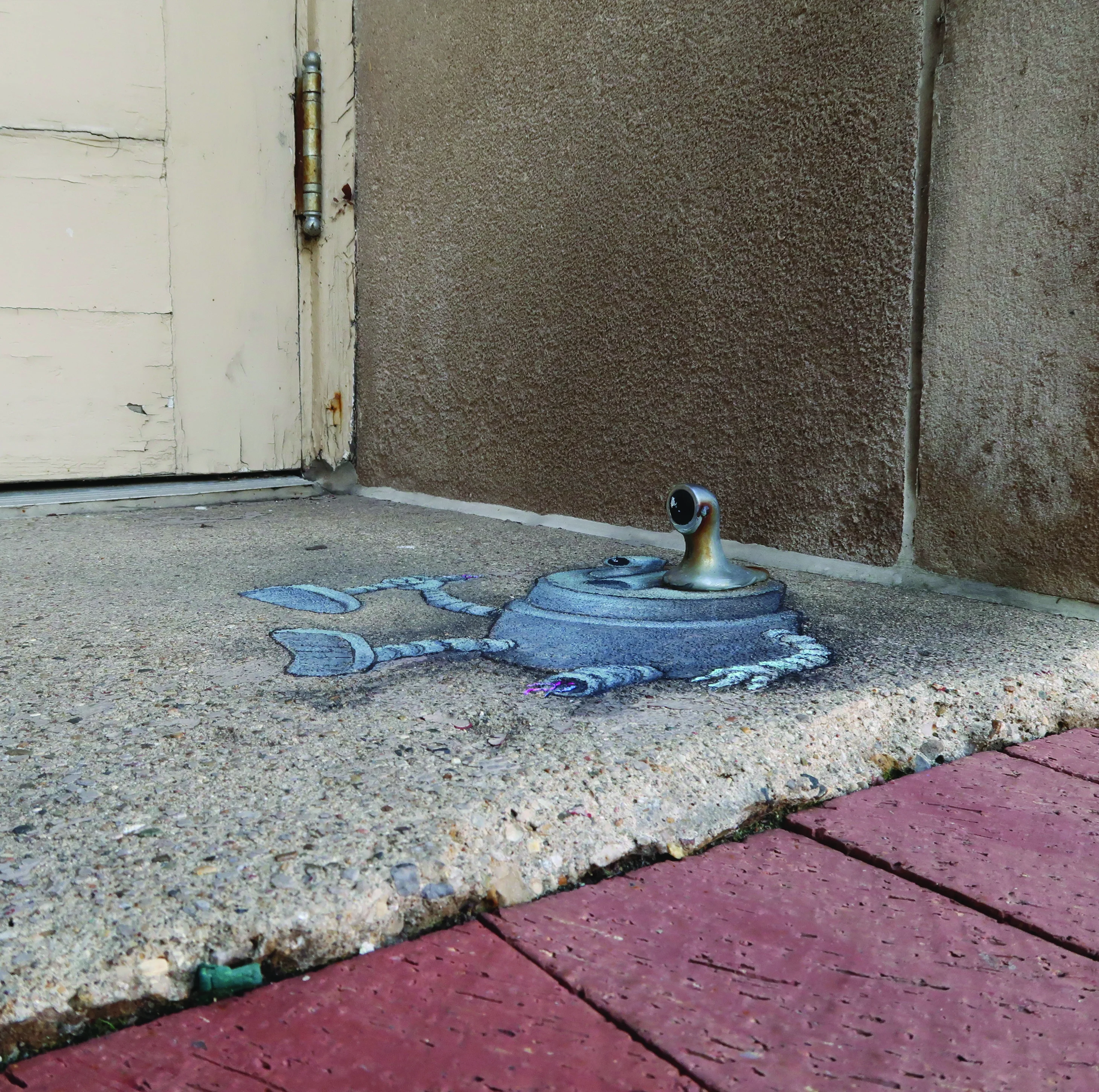
What, for you, is ‘art’?
Art has become the way I navigate problems that I can only see out of the corner of my eye. Some things can be addressed directly through dissection and analysis, but others are better handled through gut instinct and seemingly pointless ritual. Kneeling outdoors and drawing pictures in the dust gives me that ritual. Each of us has a unique perspective and an instinct to share that perspective with others. Whether or not we call that process Art is immaterial to the difference it makes.
